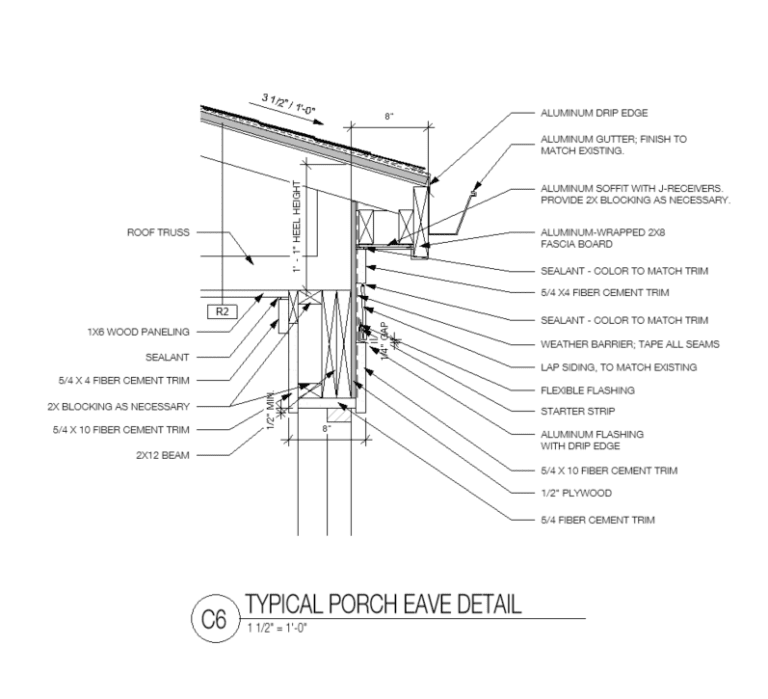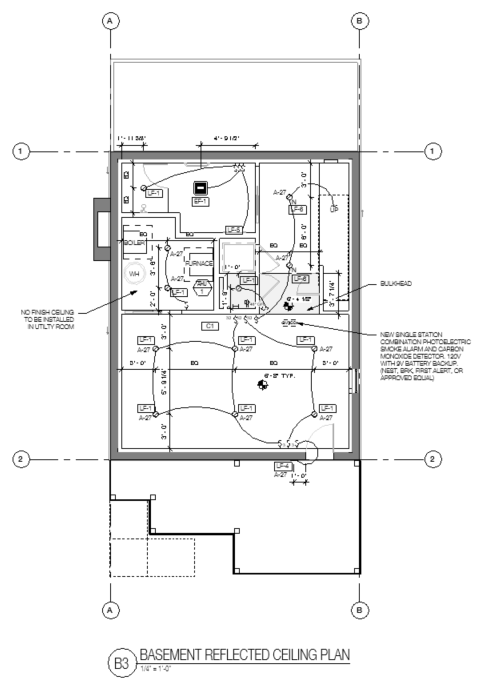Introduction
February’s blog post, “Additional Services,” briefly highlighted a few services that are typically provided by outside consultants. A consultant, in the field of Architecture, is an individual or group that specializes in a field related to buildings or the site on which a building is located. Depending on the scope of the project and the jurisdiction of the property, different consultants may be required to complete contract documents and acquire a permit. Understanding when each consultant is required and what each consultant does can be challenging. This blog post will explain the role that architectural consultants play in a new construction or renovation project.
"An Architect knows something about everything. An engineer knows everything about one thing."
- Matthew Frederick
Typical Project Consultants
Structural
A structural engineer determines the sizing and organization of structural members within a building, including foundations, load-bearing walls, beams, posts, and roofs. This consultant is needed any time a new structure is built or when a change is made to an existing structural element. For example, a project that incorporates an addition, dormer, new deck, or one that modifies a load-bearing wall would likely require a structural engineer. The structural engineer will create drawings that dictate the size, location, and integration of the structural members within the building. The architect will coordinate with the structural engineer to ensure the design and structure work together.
Even if your architect offers an additional service for structural drawings, depending on the scope of the project and jurisdiction of the property, the architect may not be able to sign and stamp these drawings to make them valid and approved for permit. In this capacity, a structural engineer will still be needed to review and stamp the drawings.

Geotechnical
A geotechnical engineer evaluates the bearing capacity of a site by taking and studying soil samples. This consultant is often needed for new construction, or when architectural changes may significantly impact the load on the existing foundation and site. For example, a geotechnical engineer would assist with evaluating the existing foundation system to build a second level above a single-story building. The geotechnical engineer would study the site by digging test pits around the house to determine the overall soil composition and its bearing capacity. This information would then be compiled into a report and provided to the owner. The architect and structural engineer will then utilize this information to evaluate the existing foundation system and inform in the creation of their designs and drawings.
Mechanical/Electrical/Plumbing
A mechanical/electrical/plumbing engineer, known as an MEP engineer, focuses on heating and cooling equipment, power requirements, gas, and water supply and drainage inside the building. This consultant is often needed for new construction, or when architectural changes necessitate the relocation or reorganization of air, power, gas, or water. For example, moving the location of mechanical ducts, updates to an electrical panel, and adding a bathroom are all projects that would likely require a MEP engineer. The MEP engineer will create drawings that dictate the size, location, and integration of ductwork, pipes, and electrical lines. The architect will coordinate with the MEP engineer to ensure that the architectural design and MEP elements work well together.
Even if your architect offers an additional service for MEP drawings, depending on the scope of the project and jurisdiction of the property, the architect may not be able to sign and stamp these drawings to make them valid and approved for permit. In this capacity, a MEP engineer will still be needed to review and stamp the drawings.

Civil
A civil engineer manages the site and infrastructure in an architectural project, including grading, erosion and sediment control, stormwater management, and roadways. This consultant is needed when a project requires changes to site topography, service lines, and infrastructure such as drainage and vehicular access. A civil engineer may also be required when the amount of disturbed earth exceeds a specific amount dictated by the jurisdiction. For example, some jurisdictions will require additional information about site modifications, such as an infill plan, which is provided by the civil engineer. The civil engineer will create drawings that detail these specific site elements, which will then be coordinated with the architect.
Interior Design
An interior designer primarily focuses on fixtures, finishes, furnishings, colors, circulation, and efficiencies to achieve specific project goals. An interior designer will sometimes assist the architect with the permit and contract documents and is an asset to clients who want assistance creating a particular atmosphere, whether in a residential or commercial setting. If an interior designer is hired as a consultant during an architectural project, they will assist both the architect with the layout and the client with selections such as tile, casework, paint colors, furniture, etc.

Landscape
A landscape architect or landscaping consultant designs the exterior environment and, in collaboration with the architect, how it connects to the interior. This includes designs for ground cover, paving, plants, lighting, and other exterior elements. This consultant is typically not needed for permitting a project but is an asset to clients who want to thoughtfully design their exterior space. For example, a landscape architect can thoughtfully design a courtyard space that connects with the interior and aligns with the building’s design intent. The consultant can create drawings that detail the layout and organization of selected products and plantings. Their work can be coordinated with the architectural set, or it can be separately managed. It is important to note that a landscape architect and a landscaping consultant are two separate titles that are differentiated by a professional certification and the services they offer. Though both are qualified to do landscaping design, a landscape architect primarily provides designs for a project while landscaping consultants tend to offer both design and build services. An Architect can help advise a client on selecting the best fit for a particular project.
The Bottom Line
Knowing what role consultants play in a project can help homeowners and developers best prepare for the work ahead. Each consultant has their own scope, project schedule, and fee for the owner to consider. It is also important to ensure that consultants are properly licensed in the state in which the project resides. The Architect can help the owner identify and select the necessary consultants for the realization of their project, so it’s a good idea to meet with an architect sooner rather than later!
